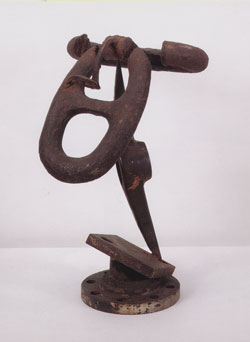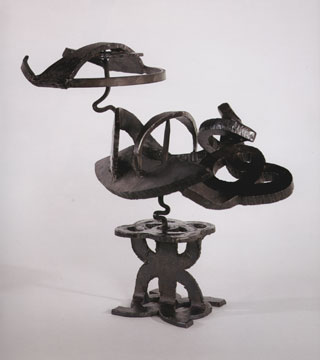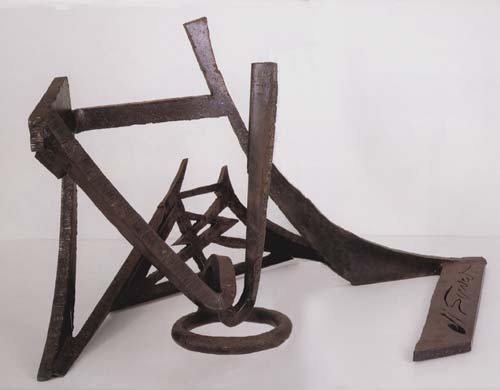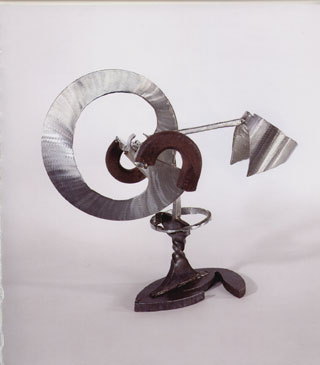| The sixteen works that were in
the exhibition are within human scale, not literally but as they were raised
up on pedestals so that one could see them at or slightly below eye level. Some
might be heavier than humans, some not. It's hard to tell because they are made
mostly of steel, although one could figure it out (without weighing them) based
on the amount of steel used and knowing the weight of steel. But it wouldn't
really matter, any more than it matters for us about our own weight. Of course,
it does matter in that there is a correct mass that can be balanced, eccentric
as the mass might be. Having come into being, these figures exist in unexpected
complexity, products of their making, of having been cut and twisted from base
matter.
In this latter work, and in the entire series of "Women" paintings
and drawings he did from 1947 through the mid-1950s, de Kooning established a
very strong connection to Picasso and Cubism, particularly to Picasso's Les
Demoiselles d'Avignon of 1907 and Guernica of 1937. De Kooning was,
in a sense, rescuing the force and freedom of modern painting, partly from the
presumed certainties of Mondrian and Constructivism and partly from the depredations
of authoritarian government and world war. It is a curious and powerful evocation,
or reemergence, dependent on the original but not at all like it. There is still
the sense in Cubism that things do fit together in time and space despite their
fragmentation. De Kooning, on the other hand, confronts an absolutely incongruous
world in which wholeness resides, and this itself is uncertain, only in the vision
of the artist. Every time he apprehends something, he, or it, bumps into something
else. |



